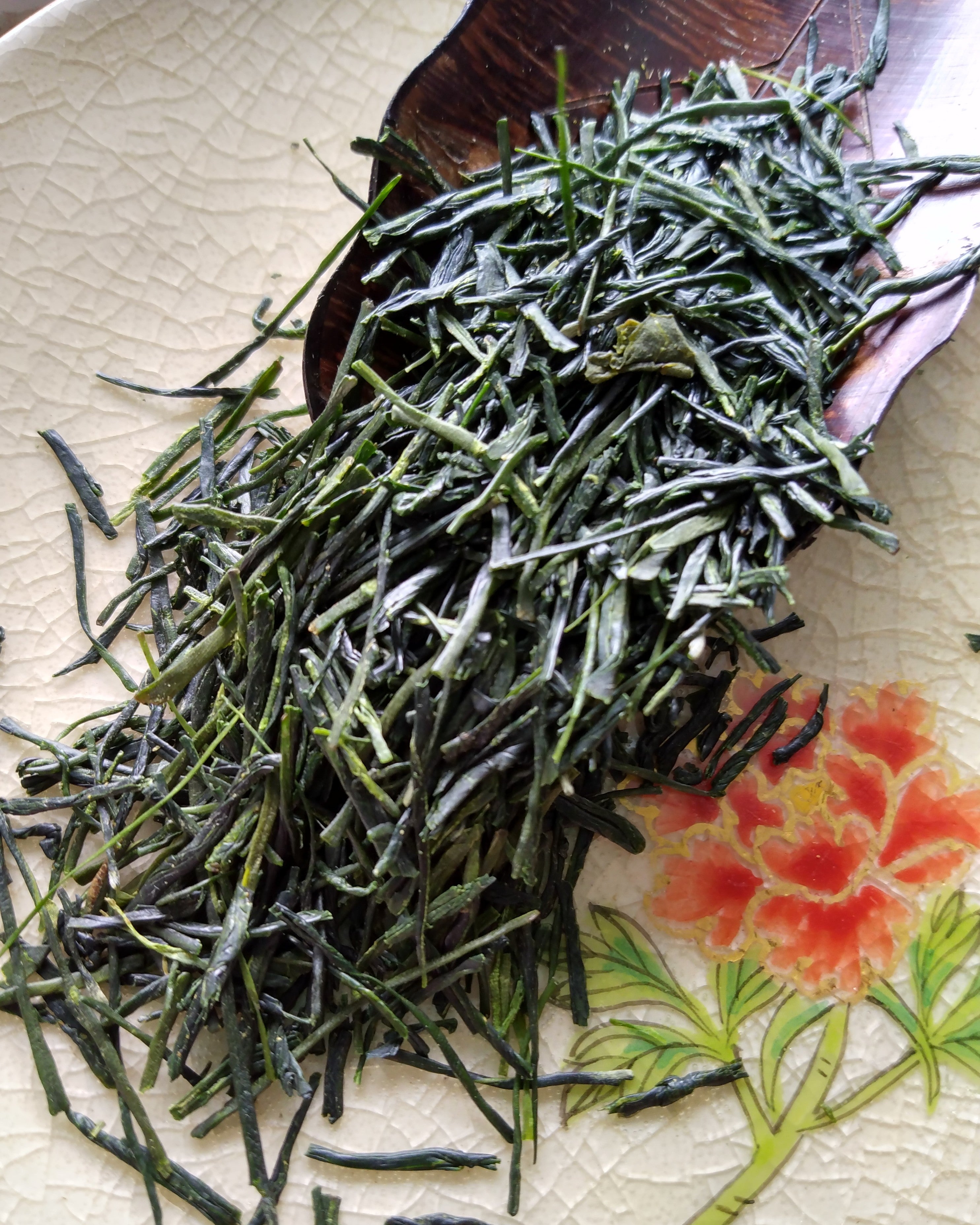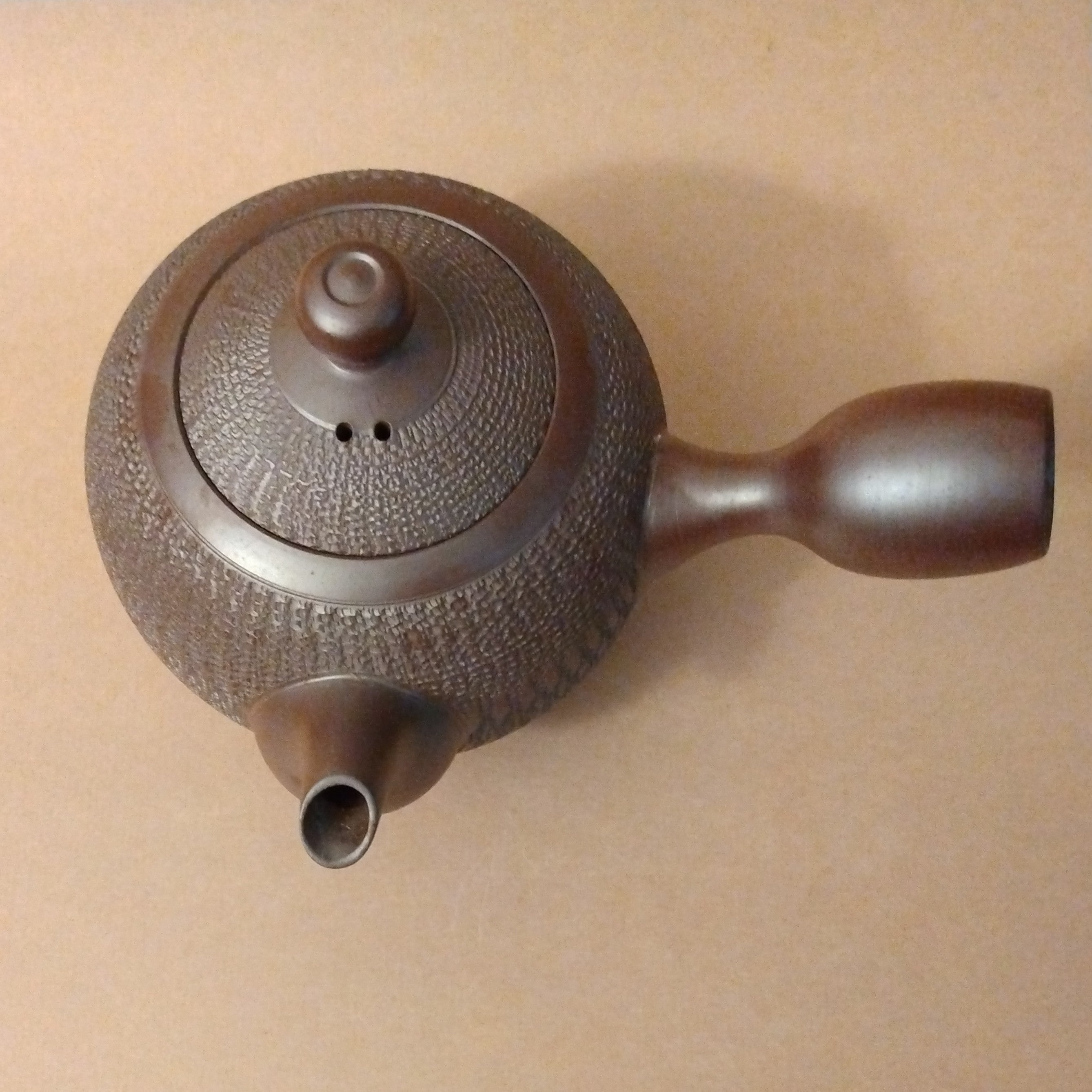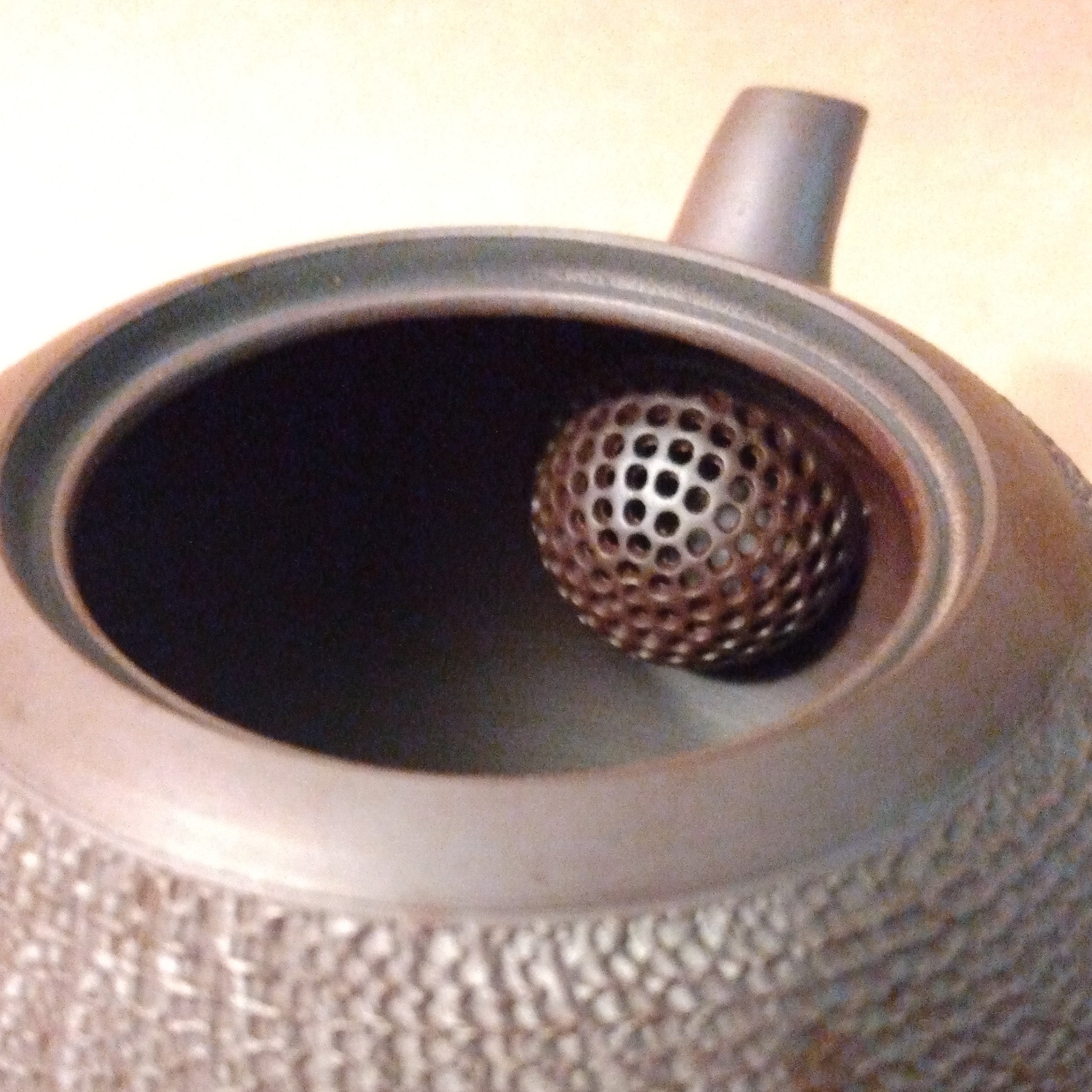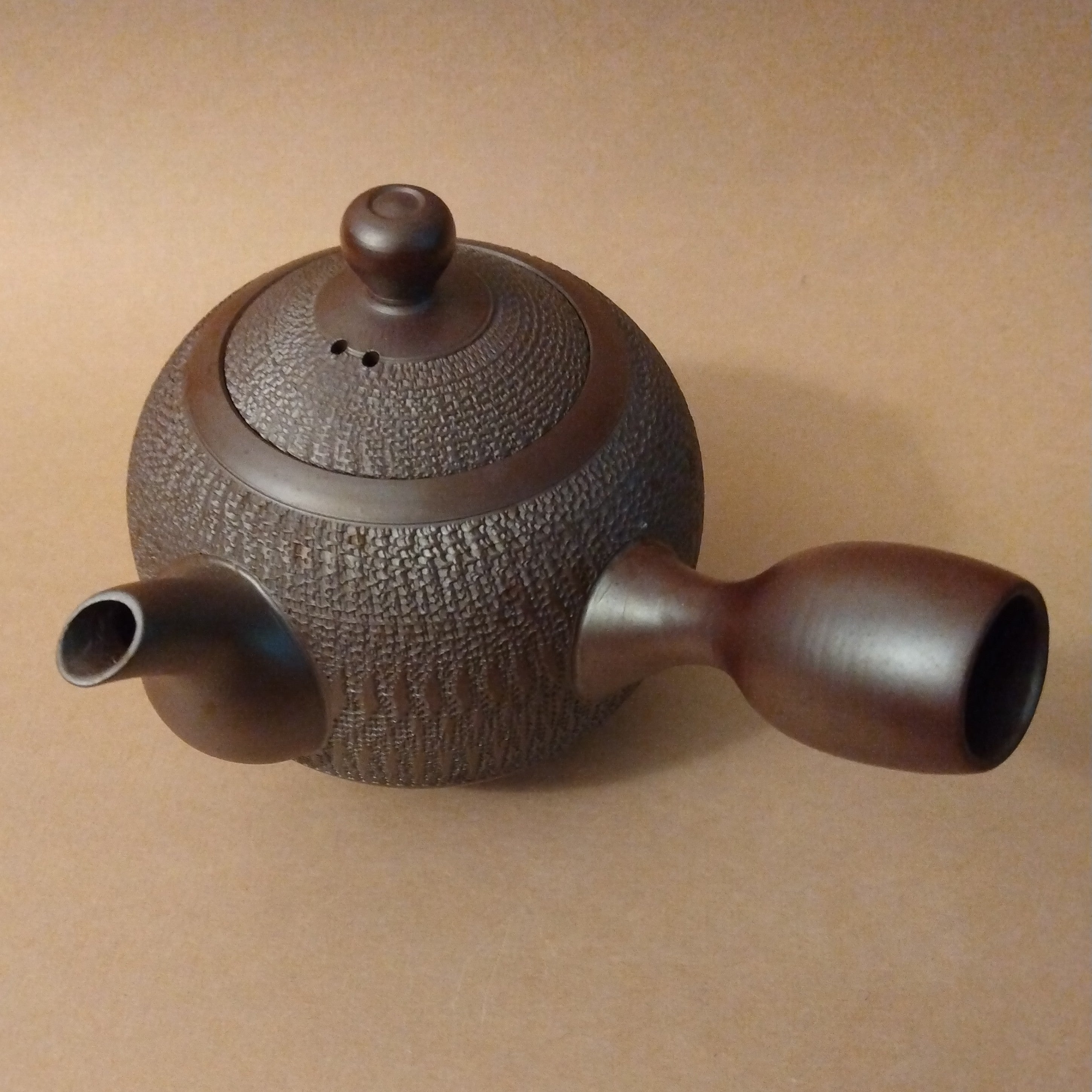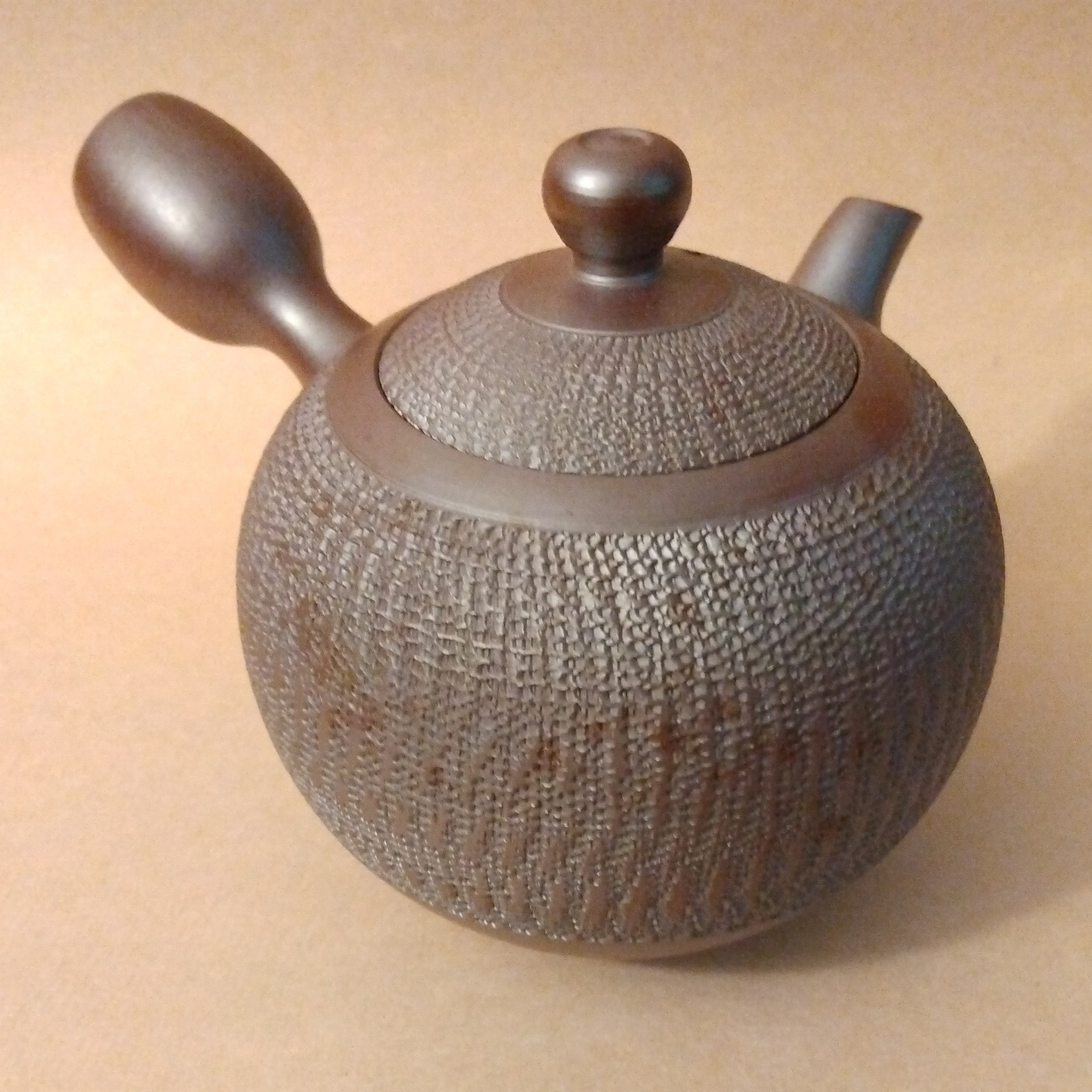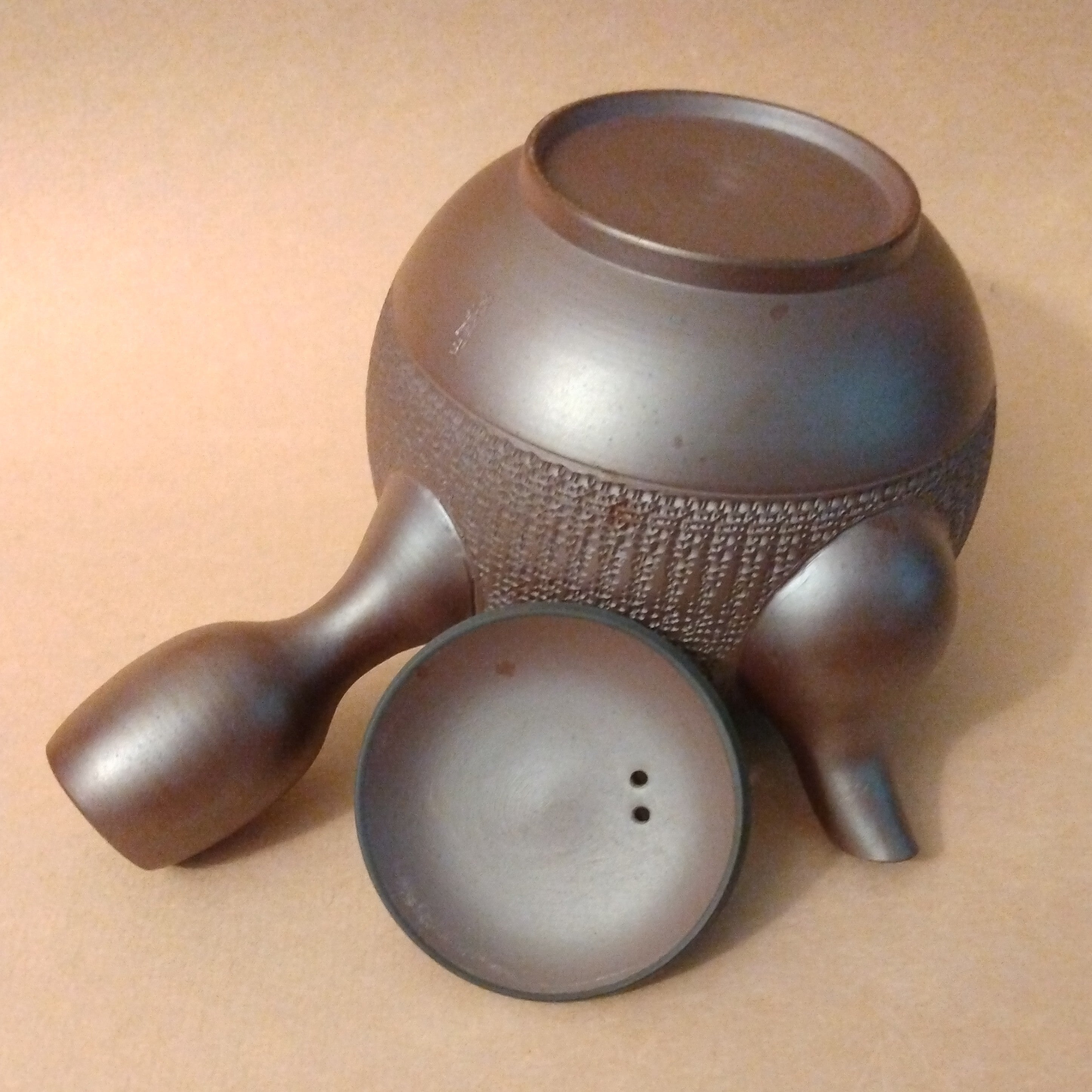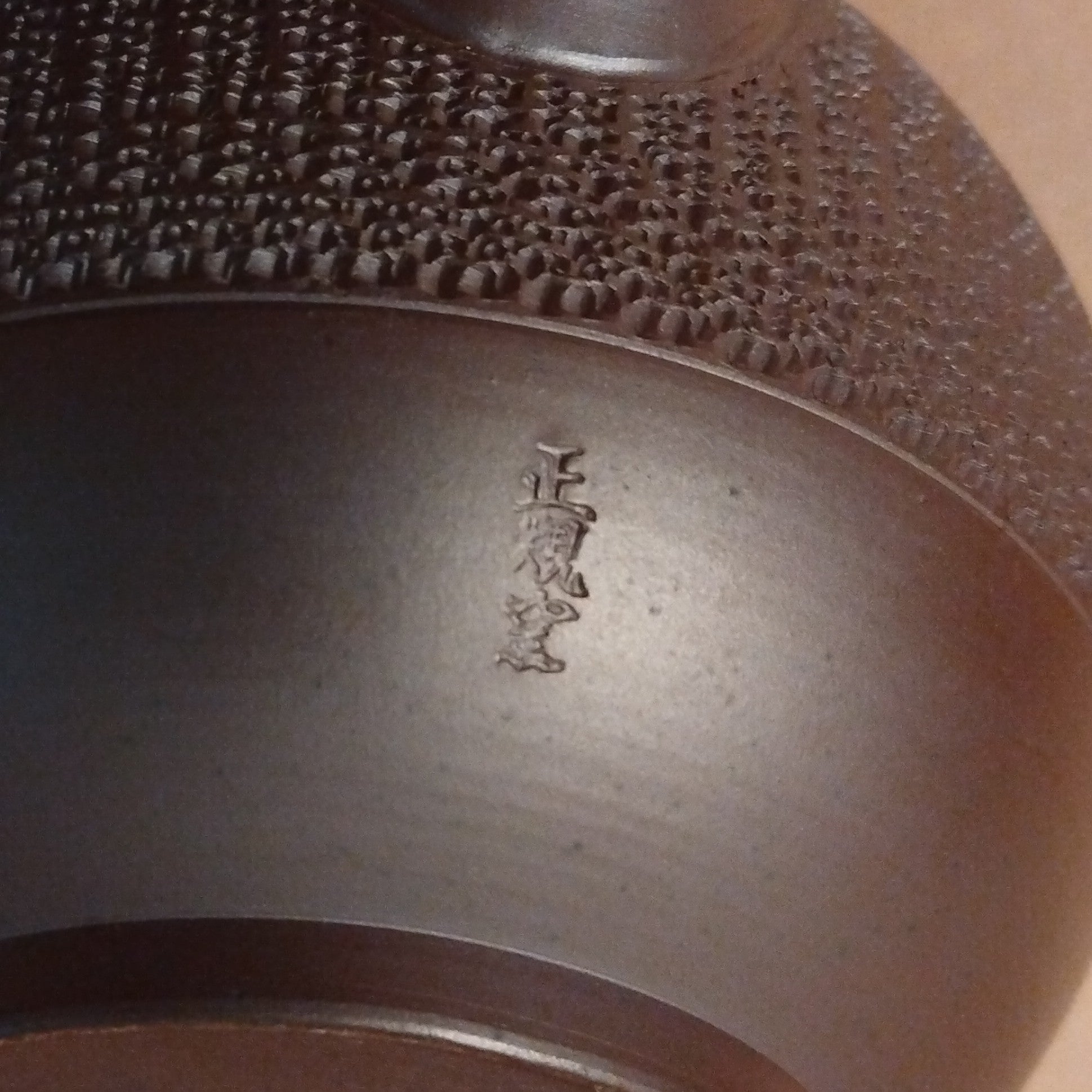Description
Banko-yaki Kyusu (Side-handle Tea Pot) by Tachi Masaki; Yokkaichi City, Mie Prefecture. 320cc/10.8oz. H.3.5"(9cm) x W. (including handle)5.5"(14cm) x Bowl Diameter 3.75"(9.5cm). Weight 205 grams. Ceramic mesh interior strainer. This tea pot seems small, but the round shape ("marugata") gives it plenty of interior volume. It is finely crafted with intricate chatter-marked carving around the body and on the lid. The technique is known as "biri" among Banko potters and uses a small razor to make such detailed lines, whereas the similar technique of "tobikanna", often associated with Onta-yaki in Oita Prefecture, uses a larger metal strap that produces lines more akin to stripes as the blades bounces up and down as the pot spins on the potter's wheel. The lid has two air holes (instead of the typical one) for good tea flow while pouring. The clay is the iconic purple "shidei" clay of Yokkaichi Banko. It is an iron-rich clay, that along with Tokoname and Mumyoi wares, is known as especially preferred among Japanese tea connoisseurs. The superior heat retention and astringency-absorbing components of the clay have made Banko wares popular for both tea pots and cooking vessels (donabe) for generations. It's said that tea brewed in a Bank tea pot has a mellower flavor. Tachi Masaki is a well-known Banko-yaki tea pot artisan who has exhibited his work regionally around Mie Prefecture, as well as in the United States.
The history of Banko-waki goes back to the mid-1700's, when a wealthy merchant in nearby (to Yokkaichi) Kuwana named Nunami Rozan established his own kiln in the late 1700's to further pursue his passion and studies in The Way of Tea (Cha no Yu). It's said that Rozan was inspired by, and learned from, the pottery of Kyoto pottery giant Ogata Kenzan. Rozan stamped his works "Banko" or "Banko Fuetsu" meaning everlasting or unchanging. So, unlike many Japanese pottery traditions, Banko ware was not named after the place of production, but by a poetic moniker created by the founder. It wasn't until decades later that Banko ware became a production industry creating wares for a larger domestic audience. In the late Edo Period (mid-1800's) when sencha-type green tea became available to the masses, this greatly contributed to the development of Banko ware and to becoming a center for tea pot production, along with Tokoname. It had gone through ups and downs, along with the national economy, over several generations and in the early 1900's, it even became an export producer with more than half of their production exported to the U.S. However WWII saw the destruction of much of the region through Allied bombings, and over 80% of Banko-ware kilns were lost. The region resumed mass production for domestic consumption after the war, and Banko-yaki training and techniques actually spread to several other parts of Japan. There are now "types" of Banko ware in Akita, Fukushima, Tochigi, Kanagawa, and Gifu Prefectures; respectively named Akita-Banko, Nihonmatsu-Banko, Ashikaga-Banko, Hama-Banko, and Mino-Banko after the cities in which they are centered.
Fortunately, artisan-made pottery for tea use has also once again flourished around Yokkaichi and there are several ateliers of expert potters making fine tea ware.
